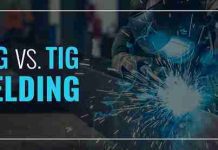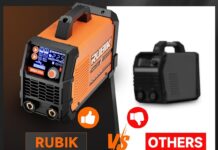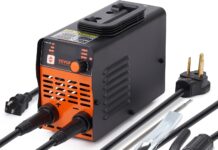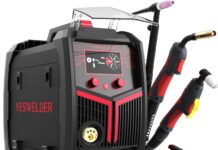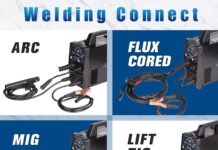In the world of welding, strength is a crucial factor that determines the success and longevity of a weld. We all want to ensure that our welds are strong enough to withstand the test of time and withstand the demands of the job at hand. But with so many different welding techniques out there, how do we know which ones produce the strongest welds? In this article, we will explore the various welding techniques and discover which ones are renowned for their ability to create welds that are exceptionally strong. By the end, you’ll have a better understanding of the welding techniques that can truly stand the test of strength.
Shielded Metal Arc Welding (SMAW)
Overview
Shielded Metal Arc Welding (SMAW), also known as stick welding, is a popular welding technique that has been used for decades. It involves creating an electric arc between a flux-covered electrode and the workpiece, which melts the electrode and fuses it with the base metal, creating a strong bond. SMAW is widely used in various industries, including construction, automotive, and fabrication.
Process
The process of SMAW involves several steps. First, the welder prepares the workpiece by cleaning it and ensuring it is free from any contaminants. Then, the welder selects an appropriate electrode based on the material being welded and the desired characteristics of the weld. The electrode is inserted into the welding machine, and the electrical current is adjusted to create the desired heat intensity.
Once everything is set up, the welder strikes an arc by touching the electrode against the workpiece and quickly pulling it away. This creates an electric current that heats up the electrode and the base metal, causing them to melt. As the electrode melts, its flux coating forms a protective shield around the weld pool, preventing the formation of harmful gases and impurities.
The welder proceeds to move the electrode along the joint, continuously feeding it into the weld pool to maintain the arc and depositing molten metal to create the desired weld. After completing the weld, the welder allows it to cool before performing any necessary cleaning or finishing processes.
Advantages
One of the key advantages of SMAW is its versatility. It can be used to weld a wide range of materials, including carbon steel, stainless steel, cast iron, and non-ferrous metals. This makes it an ideal choice for various applications.
SMAW is also a portable and flexible welding technique. It does not require a shielding gas, making it suitable for outdoor or remote welding jobs. Additionally, the equipment is relatively simple and inexpensive compared to other welding processes, making it accessible to a wide range of users.
Furthermore, SMAW produces strong and durable welds. The combination of the flux coating and the intense heat creates a weld that has excellent tensile strength and good resistance to impact and fatigue.
Disadvantages
While SMAW has numerous advantages, there are also some disadvantages to consider. One of the main drawbacks is the slower welding speed compared to other techniques. This is because the welder needs to continuously stop and start to replace consumed electrodes, which can result in longer welding times.
Additionally, SMAW may produce more spatter and smoke compared to other processes, which can be a concern in terms of cleanliness and safety. The formation of slag during the welding process may also require additional cleaning and post-weld treatments.
Lastly, SMAW may not be suitable for welding thin materials due to its high heat input and potential for distortion. The arc can also be less stable when working in challenging positions, such as overhead or vertical welding.
Despite these limitations, SMAW remains a widely used and reliable welding technique for many applications.
Gas Metal Arc Welding (GMAW)
Overview
Gas Metal Arc Welding (GMAW), commonly known as MIG (Metal Inert Gas) welding, is a popular welding technique that utilizes a continuous wire electrode and a shielding gas to create strong and efficient welds. It is widely used in industries such as automotive, manufacturing, and construction.
Process
The process of GMAW involves several key steps. First, the welder prepares the workpiece by cleaning it and ensuring it is free from any contaminants. The welder then sets up the welding machine, which includes selecting the appropriate wire electrode and shielding gas based on the material being welded and the desired characteristics of the weld.
Once the setup is complete, the welder starts the welding process by feeding the wire electrode through the welding torch and adjusting the welding parameters, such as voltage, wire feed speed, and shielding gas flow. When the welder initiates the arc, the wire electrode melts and creates a molten puddle on the workpiece surface, developing a strong bond.
During the welding process, the shielding gas, which is typically a mixture of argon and carbon dioxide, is released through the welding torch to shield the molten metal from atmospheric contamination. This prevents the formation of defects and helps create clean, high-quality welds.
The welder moves the welding torch along the joint, continuously feeding the wire electrode and depositing molten metal into the weld pool. The welding machine adjusts the electrical current and wire feed speed automatically to maintain a stable arc and achieve the desired weld characteristics. Once the weld is complete, the welder allows it to cool before any necessary cleaning or finishing processes.
Advantages
GMAW offers several advantages that contribute to its popularity in various industries. One of the key advantages is its high welding speed. The continuous feeding of the wire electrode allows for faster deposition rates, resulting in increased productivity and efficiency.
Another advantage is the versatility of GMAW. It can be used to weld a wide range of materials, including carbon steel, stainless steel, aluminum, and other non-ferrous metals. Different types of wire electrodes and shielding gases can be selected to achieve the desired weld characteristics, such as strength, corrosion resistance, or aesthetic appearance.
GMAW also produces clean and aesthetically pleasing welds. The shielding gas effectively protects the molten metal from atmospheric contamination, minimizing the formation of defects such as porosity or excessive spatter. This makes GMAW suitable for applications where visual quality is important, such as automotive bodywork or architectural components.
Disadvantages
While GMAW has numerous advantages, it is not without its limitations. One of the main disadvantages is its sensitivity to wind and drafts. The shielding gas can be easily disturbed, leading to inadequate coverage of the weld pool and potential defects. Therefore, GMAW is typically performed in controlled environments or with the use of windshields or enclosures.
GMAW also requires a power source and shielding gas, which adds to the initial setup cost compared to some other welding techniques. Additionally, the wire electrode and shielding gas need to be replenished regularly, leading to ongoing consumable costs.
Furthermore, GMAW may not be suitable for all positions or joint configurations. Welding in challenging positions, such as overhead or vertical, can be more difficult due to the increased risk of weld pool sagging or poor fusion.
Despite these limitations, GMAW remains a widely used and efficient welding technique, particularly for applications that require high productivity, versatility, and visual appearance.
Flux-Cored Arc Welding (FCAW)
Overview
Flux-Cored Arc Welding (FCAW) is a versatile welding technique that combines elements of both SMAW and GMAW. It involves the use of a continuously fed tubular wire electrode that contains a flux core. FCAW can be performed with or without shielding gas, making it suitable for various welding applications.
Process
The process of FCAW is similar to GMAW but with a few key differences. The welder starts by preparing the workpiece and selecting the appropriate wire electrode based on the material being welded and the desired weld characteristics.
In self-shielded FCAW, the wire electrode contains a flux core that generates a shielding gas when it melts. This eliminates the need for an external shielding gas, making the process more portable and suitable for outdoor or windy conditions. The flux also contains deoxidizers and other additives that help improve the weld quality and mechanical properties.
In gas-shielded FCAW, an external shielding gas, typically a mixture of argon and carbon dioxide, is used to protect the weld pool from atmospheric contamination. This allows for better control of the welding environment and can result in cleaner and more efficient welds.
Once the welder initiates the welding process, the wire electrode melts and forms a protective shield around the weld pool, preventing the formation of harmful gases and impurities. The welder moves the welding torch along the joint, continuously feeding the wire electrode and depositing molten metal into the weld pool. The welding parameters, such as voltage, wire feed speed, and shielding gas flow, are adjusted to achieve the desired weld characteristics.
After completing the weld, the welder allows it to cool before performing any necessary cleaning or finishing processes.
Advantages
FCAW offers several advantages that make it a popular choice for many welding applications. One of the key advantages is its high deposition rate. The continuously fed wire electrode allows for fast and efficient welding, resulting in increased productivity compared to some other techniques.
Another advantage is the versatility of FCAW. It can be used to weld a wide range of materials, including carbon steel, stainless steel, and even some nickel-based alloys. The choice of flux core and shielding gas allows for greater control over the weld characteristics, such as strength, corrosion resistance, or penetration.
FCAW is also suitable for welding thick materials due to its high heat input and deep penetration capabilities. This makes it ideal for applications that require robust and durable welds, such as heavy machinery, structural steel, or shipbuilding.
Additionally, self-shielded FCAW eliminates the need for an external shielding gas, making it more portable and cost-effective. This makes it a popular choice for outdoor or remote welding jobs where access to a shielding gas supply may be limited.
Disadvantages
Despite its advantages, FCAW also has some disadvantages to consider. One of the main drawbacks is the potential for higher levels of spatter compared to other welding processes. This can result in additional cleanup and post-weld treatments, especially when welding in critical or aesthetic applications.
FCAW can also produce more smoke and fumes, especially when using flux cores that contain high levels of potentially harmful elements. Adequate ventilation and personal protective equipment (PPE) are necessary to ensure a safe working environment.
Furthermore, FCAW may not be suitable for all positions or joint configurations. Welding in challenging positions, such as overhead or vertical, can be more difficult due to the increased risk of weld pool sagging or poor fusion. The choice of flux core and shielding gas also requires careful consideration to avoid issues such as porosity or excessive spatter.
Despite these limitations, FCAW remains a versatile and efficient welding technique, particularly for applications that require high deposition rates, deep penetration, and versatility in terms of material welding. It offers a balance between the portability of SMAW and the productivity of GMAW, making it a popular choice in various industries.



